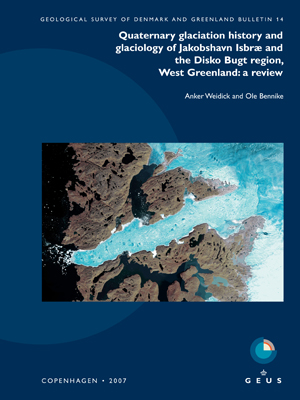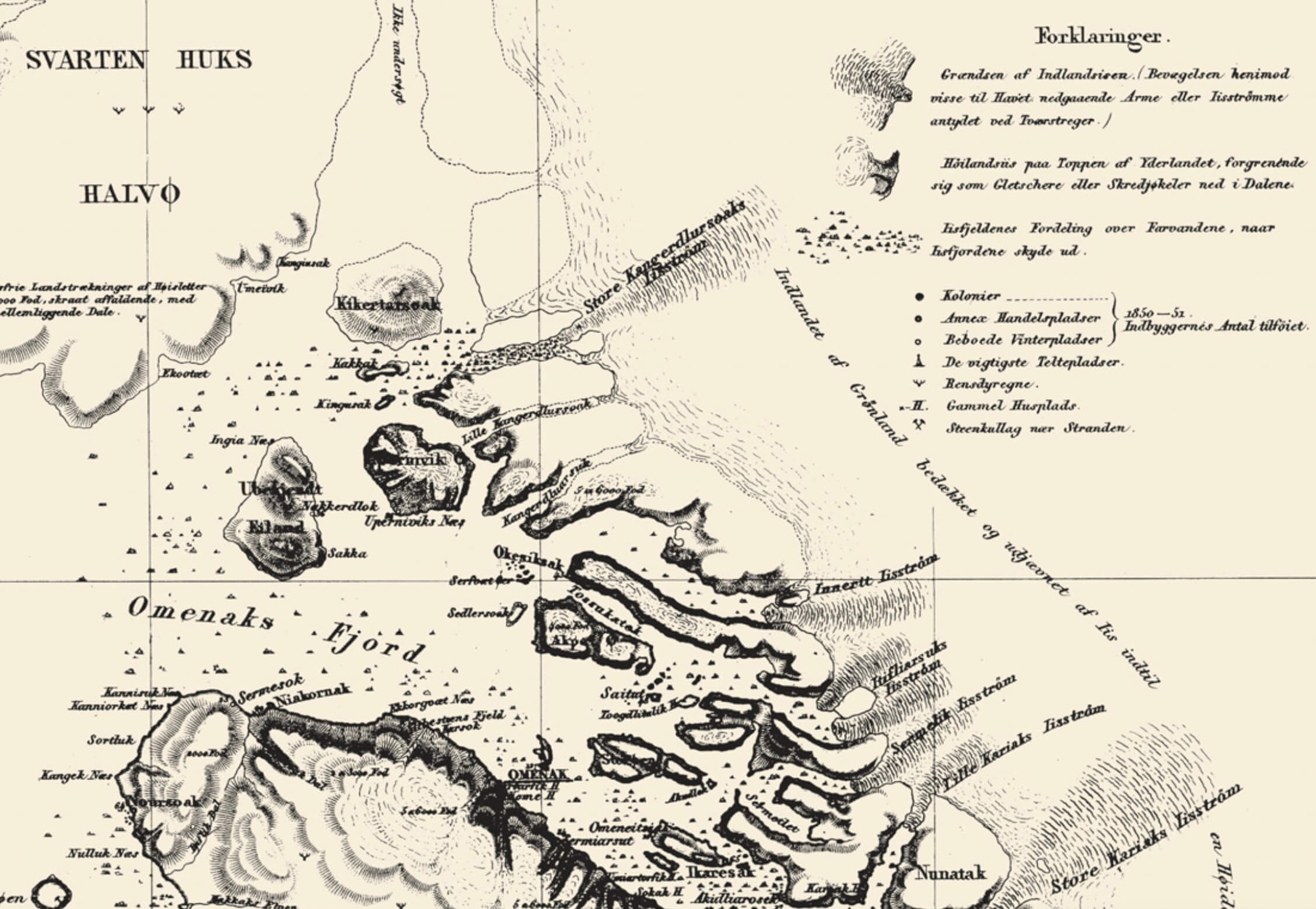Quaternary glaciation history and glaciology of Jakobshavn Isbræ and the Disko Bugt region, West Greenland: a review
Anker Weidick and Ole Bennike
"Der Jakobshavner Eisstrom ist der König unter
Den grönlandischen Gletschern. Kein anderer der
Schnellaufenden Inlandeis-Abflüsse füllt so wie er
Seinen Fjord mit Eisberge an."
(Alfred Wegener 1930)
Central West Greenland is characterised by a number of permanent ice streams, a term introduced by H.J. Rink, who conducted the first glaciological investigations in Greenland. Jakobshavn Isbræ is one of the fastest and most important ice streams draining the Greenland ice sheet. In recent years, the velocity of Jakobshavn Isbræ has increased, and since 2002 a marked recession of the ice front has taken place.
This bulletin provides a review of the Quaternary development of the Disko Bugt region, but we also present new radiocarbon age determinations that provide constraints on the Holocene development of the Jakobshavn Isbræ. Disko Bugt was deglaciated rapidly in the early Holocene, around 10 500–10 000 years ago. The margin of the Inland Ice attained a position close to that seen today 8000–6000 years ago, and about 5000 years ago, it was located east of its present position. The subsequent Neoglacial readvance culminated around A.D. 1850, during the Little Ice Age.






